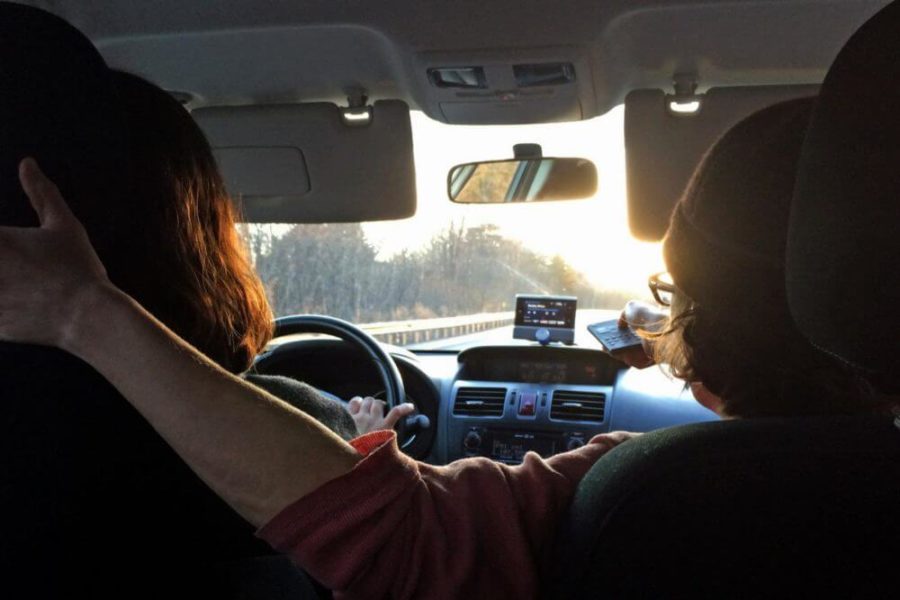It’s a well worn media trope. 21st century millennials are leading the way to a green transportation future, moving to cities, riding public transit, biking and walking – and often delaying car purchases indefinitely, to Detroit’s growing dismay.
The reality is more complex, says a new study by University of Vermont researchers recently published in the Annals of the Association of American Geographers. Since the public discussion is mostly about the driving habits of post-college age 20-somethings who have moved to cities, the researchers decided to trace backward to see if there is evidence of high school age teens changing their behavior.
Their answer: only in part, suggesting the larger narrative may be overstated.
Infrastructure and land use patterns in the community play a major role in teens’ decisions about whether to begin driving when they’re of age, said Meghan Cope, professor of geography at the University of Vermont and co-author of the study.
“If we’re concerned with trying to make non-car transportation viable for teens – a habit they could carry over into later years – then land-use patterns, density and the transportation network of walkable areas, bike paths and public transportation really matter,” Cope said. Meeting teen mobility needs would also benefit other groups who can’t depend on driving to meet their needs, she said.
The study compared teen behavior in two Vermont school districts. One was semi-urban with a variety of public transportation options and teen destinations like a mall and the high school located nearby. The other was more rural and suburban with little public transportation, and destinations – from the high school to friends’ houses to shops – accessible only by car or school bus. Both districts are suburbs of Burlington.
In the more rural suburban district, teens obtained their driver’s license on average within a month of their 16th birthday. In the more urban community, teens delayed several months before getting their license.
The study also looked at the way the Internet and cell phones influenced teen mobility. The authors found that technology influences travel behaviors by helping teens arrange rides and meeting up, but did not replace meeting in person.
Both communities the researchers studied were affluent, Cope said. Many families surveyed had the resources to purchase a car for their teen or make an existing vehicle available to them.
Even among educated, wealthy families with influence and extensive social networks, teens from the more rural suburbs encountered obstacles to their mobility, Cope said.
“No matter what their circumstances, they bumped up against a disconnected transportation infrastructure before they had a car,” Cope said.
Transportation policy isn’t only of academic interest, Cope said.
“There’s a social justice dimension,” she said. “Land-use decisions can marginalize whole groups of people. In car-oriented suburbs, teens whose families have fewer resources or challenging work schedules, elderly people, the disabled, the poor, and those who choose not to drive are left out.”
To bring about a future that truly isn’t reliant on the automobile, Cope recommended the following:
* Create interconnected, walkable communities. “Connectivity is the key word,” she said; * Put zoning practices in place that encourage mixed-use development and higher residential densities; * Integrate both public transit and biking/pedestrian infrastructure into neighborhoods and commercial developments.
The study used a mix of research methods to obtain its results. Both parents and teens filled out an extensive questionnaire. The researchers also conducted a focus group with teens from both schools and held a participatory mapping session with them featuring an aerial photo of their towns; teens were asked to place stickers on places that were important them, while talking with the researchers about how they traveled there. The researchers also employed a research technique they invented, asking teens to verbally share selected text messages to give a more nuanced understanding of the relationship between texting and mobility, and to illuminate other aspects of their transportation choices.
If our reporting has informed or inspired you, please consider making a donation. Every contribution, no matter the size, empowers us to continue delivering accurate, engaging, and trustworthy science and medical news. Independent journalism requires time, effort, and resources—your support ensures we can keep uncovering the stories that matter most to you.
Join us in making knowledge accessible and impactful. Thank you for standing with us!

